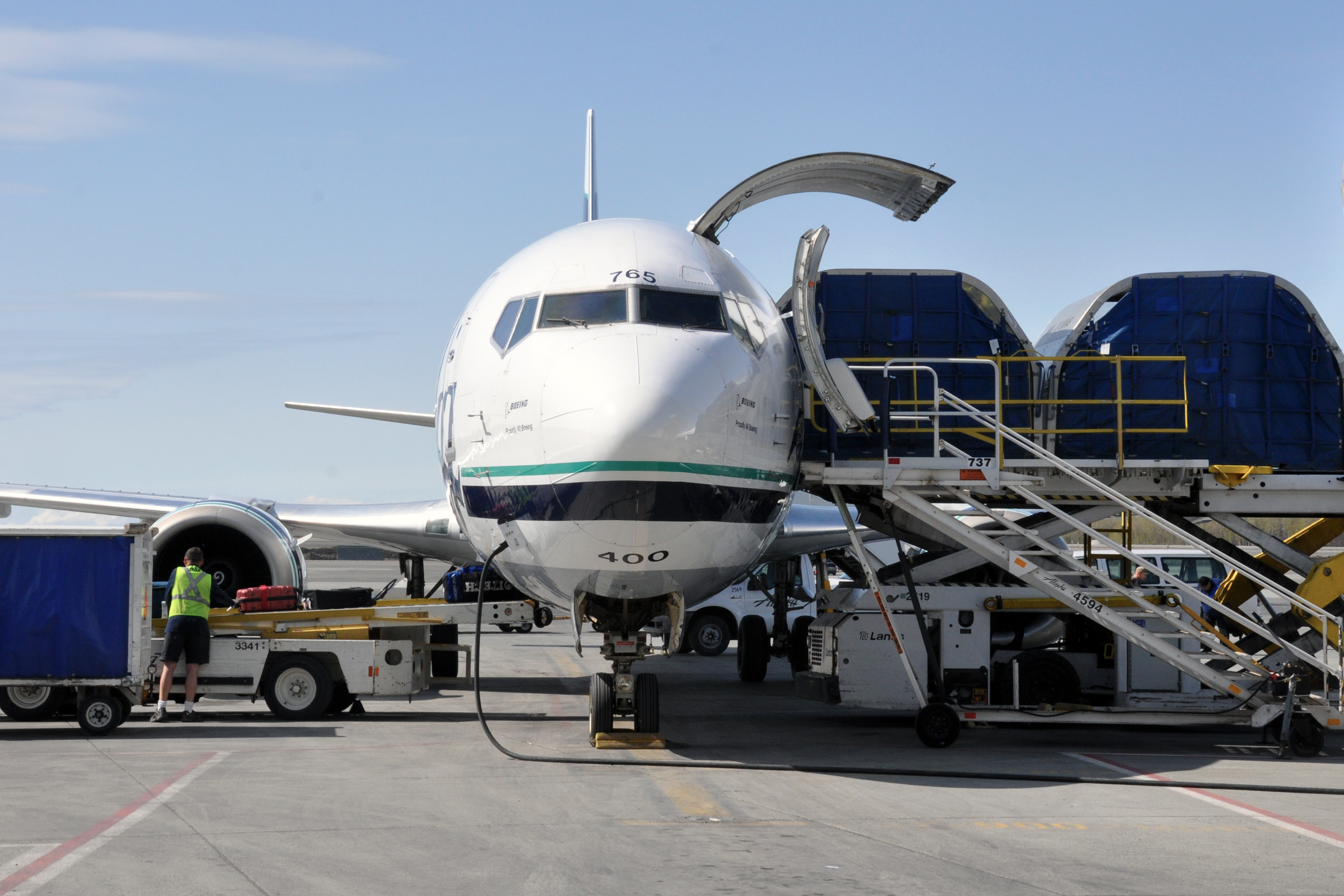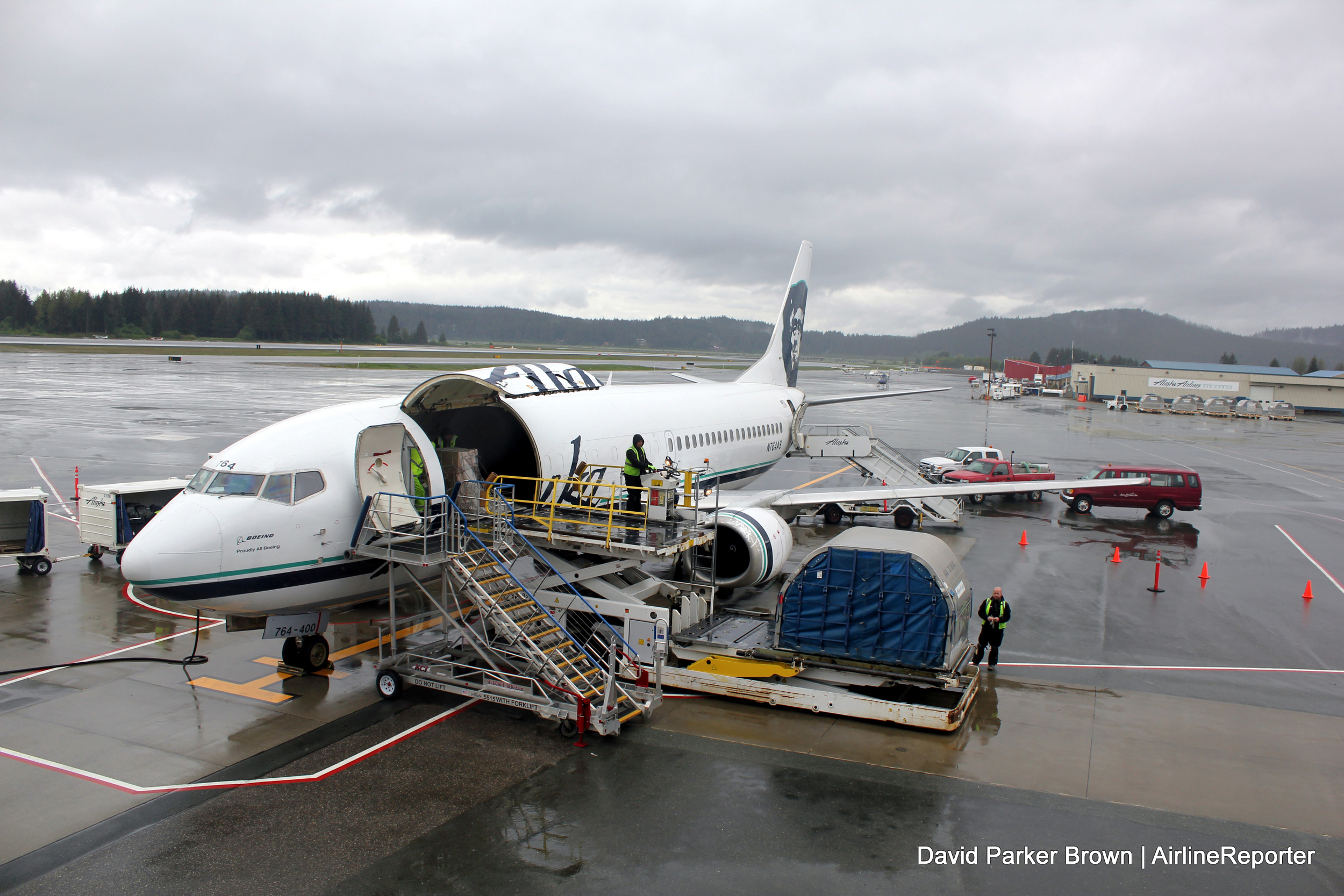Combi Aircraft - Earlier this year, when the CEO of United Airlines was put in front of a Senate panel and asked to defend his company's notably shoddy treatment of a passenger, Sen. Bill Nelson (D-FL) described his interactions with air passengers as such: "[they] feel like they're being treated as self-loading cargo rather than as valued consumers."
This aircraft combined seating for around 200 passengers with the cargo volume of a Boeing 707 in full freighter configuration. For KLM it was an ideal solution and it bought seven 747-206B combis, with large side cargo doors in the rear of the fuselage. These aircraft were delivered to KLM between 1975 and 1981. To increase passenger seating in business class without reducing the plane's cargo capacity, all seven were fitted with a stretched upper deck in the early 1980s, identical to that of the 747-306 combi version, of which KLM acquired another three. Towards the end of the decade, when KLM began preparing for further expansion, an order was placed for Boeing 747-400 aircraft as replacements for the 747-200 series. KLM acquired five standard 747-400s, plus fifteen 747-400M combi aircraft to cater for continued mixed passenger and cargo operations into the twenty-first century.
Combi Aircraft

The ensuing investigation from the FAA made it more difficult and expensive to operate combi aircraft. The FAA pushed for these planes to be converted into either all-cargo or all-passenger carriers. When combined with the rise of dedicated cargo airlines, the need and attractiveness of combi planes significantly diminished. While there are still a handful of airlines operating these types of aircraft, the heyday of the combi is well and truly over.
The Fall Of The Combi’s Popularity
"Because of where we are and where we live, we have the opportunity to help move a lot of unique things, and a lot of them are living," Alaska Airlines Vice President Marilyn Romano noted to the wire service.
According to an article in Popular Mechanics, the decline of the combi aircraft all started in 1960 when a Yale student wrote a paper. Fred Smith’s paper suggested that there was a fundamental inefficiency in the way air freight was being organized. He said that putting cargo on passenger aircraft and relying on passenger schedules was slowing things down. His suggestion was to create a dedicated fleet working on its own schedule and routes, which could make air cargo an overnight affair.
Air cargo has long been a major element of air travel, with many aircraft including goods in the cargo hold that are best shipped through the air or are infeasible to be shipped through other means, like rail or ship.
The idea of a ‘combi’ aircraft, capable of shifting significant amounts of cargo as well as a good number of passengers, has been around for more than half a century. However, very few remain in service these days, with most of the heavy users already retiring the type. Why did combi aircraft fall out of favor?

Alaska Airlines
"We felt we need to enhance our position by bringing the aircraft in earlier and allowing us to continue to increase our market share," the airline's Lorraine Bonner told the Nunatsiaq News earlier this year regarding the airline's recent expansion efforts. (It added a flight to Ottawa relatively recently.)
Managing Editor - Joanna has worked in publishing for more than a decade and is fast becoming a go-to source for commercial aviation analysis. Providing commentary for outlets including the BBC, CNBC, Reuters Thomson, and others, she works closely with IATA, AviaDev, and various airlines and suppliers to get the inside track on the global marketplace. Based in the United Kingdom
KLM has been using combi aircraft since 1975 when it took in an order of Boeing 747-200 combi planes. KLM found great use in the combi plane and — by the end of the decade — updated its fleet with Boeing 747-400s, which is the same aircraft that it uses for combi flights today.
Combi aircraft were particularly popular around the 1970s on routes where there weren't enough passengers flying to fill the aircraft. To make the service financially viable, in addition to passengers, airlines would use the aircraft to carry cargo. However, as the demand for passenger flights has grown, combi aircraft have become less of a necessity. While there are still some airlines that use existing combi aircraft, there are currently none in production.
The First Combi Aircraft
Alaska Airlines has long used combi aircraft on flights and is currently the only domestic airline in the US that operates combi flights. Due to Alaska's location, size, climate and the fact that it's so different to everywhere else in the US, a cargo section on the plane has always been a great been of great benefit to them.
Perhaps the airline that jumped in hardest for combi aircraft during this era was KLM. The Dutch airline has long taken advantage of the fact that many of its long-haul international flight paths aren't built to be sold out—making its aircraft well-suited for a little extra cargo.

By submitting this form, I give consent that National Aviation Academy or its agents may contact me via email, phone (both mobile or home, dialed manually or automatically), text, or other means regarding programs, offers, and general information about our school as part of NAA's Privacy Policy.
Certainly, we've come a long way from 1931, when domestic airmail represented 85 percent of air revenue, helping put the commercial air industry in flight—and eventually making room for commercial freight and passenger air travel to take over. But early on in particular, those two types of cargo existed side-by-side on many long-haul flights.
Boeing Changed The Game
According to the 2014 book Boeing 747: A History—Delivering the Dream, the combi format had become popular enough that 40 747s had been modified to add a cargo door, allowing for the shipment of 12 pallets worth of cargo, by 1977.
Cargo has always been an essential element of air transportation. From as long ago as the earliest origins of flight, moving mail in a timely manner from city to city was seen as just as important, sometimes more so, than moving passengers. As aviation grew up, cargo remained a critical element of airline economics, with boxes often sharing the same flight as people.
With relatively little known about the last moments of SAA Flight 295, the attention ultimately turned toward the weaknesses of the cargo compartment. Major aviation organizations, including the U.S. Federal Aviation Administration, raised concerns about the need for more fire resistance on cargo compartments. And in the years after the crash, the FAA changed regulations around combi planes in the U.S., requiring existing planes to be either upgraded to a higher standard or implement new fire suppression methods.
But just a few years later, Smith turned this idea into FedEx, a service that came on strong starting in the 1970s, becoming the first dedicated overnight delivery service with its own fleet of aircraft. It took a little bit, but the service was soon a major hit—which allowed passenger airlines to de-emphasize freight.

The Airframe Powerplant Technician Advantage
The decline of combi aircraft was further impacted by the tragic crash of South African Airways flight 295. The Boeing 747-200B, named Helderberg, was carrying a cargo of mostly electronics from Taipei to Johannesburg along with 124 passengers and crew when a fire broke out in the cargo area. The crew could not control the fire, and it was soon blazing out of control. Many passengers died from smoke inhalation; the rest perished when the aircraft crashed into the sea.
The Boeing 747 was appealing to airlines on several levels. The most significant shift here was its immense size, with a hold capable of swallowing several standard-sized pallets. By 1977, 40 Boeing 747s had been modified to add a cargo door, allowing the aircraft to hold 12 pallets of cargo.
In addition to having a uniquely functional design, ATI’s Combi aircraft meet U.S. FAA Stage Three/ICAO Chapter Three noise regulations worldwide. The long range full capacity of ATI’s 757 Combi aircraft allows us to operate over 3,000 miles non-stop, even with a full load of passengers, baggage and cargo.
KLM wasn’t the only airline heavily invested in the idea of combi aircraft. Across the pond, Alaska Airlines was making good use of another Boeing aircraft, albeit a little smaller, to facilitate the important cargo shipments delivered across its milk run flights. Alaska used the 737-400 for this mission, giving it capacity for 72 passengers and four large cargo containers.
Canadian North
In the 1960s, a Yale student named Fred Smith outlined a problem with the way that freight was delivered through the air system, saying that putting stuff on passenger planes, using passenger routes and schedules, just slowed things down. By creating a dedicated fleet that worked on its own schedule and routes, he claimed, freight could become an overnight affair.
Perhaps one of the earliest examples of this was Northwest Airlines, which had been approved for a route to Alaska in the 1940s, giving it access to the Asian market. The company publicly changed its name for a time to Northwest Orient Airlines to reflect this shift.

ATI’s experienced and friendly flight attendants are dedicated to making your flight the best it can be with individual personalized service on every flight. We are capable of serving beverages, along with hot and cold meals ranging from a light snack to a multi-course meal. Additionally, our service includes in-flight movie options.
Wherever you want to go in this world, chances are aviation maintenance can get you there. And once you arrive, that’s only the beginning. National Aviation Academy’s (NAA) hands-on career training will prepare you for the limitless opportunities available in aviation maintenance. We want you to dream bigger, reach higher, and watch your career take off!
First Air
As sad as it might be that Alaska Airlines is ditching combi aircraft after all these years, there will be at least one airline carrying the combi flame in North America. And it's focused on a similar spot, latitude-wise, as Alaska Airlines is.
“My instructors were knowledgeable about the subjects, and able to give me tips and tricks beyond the curriculum to improve my understanding of the material. With their support and National Aviation Academy’s curriculum I was able to, not only get my certifications, but secure employment!”
“I think a lot of women are intimidated by this kind of work or they see themselves in a cookie-cutter role. I hope that more women will get into trades and technical work like this because there’s a demand for it. At the end of the day it feels really good knowing that I’m helping pave the way for women coming up behind me.”
Canadian North, an airline that focuses on the northwest territories of Canada is a great example of an airline that still uses combi aircraft to make up for the lack of demand for passenger flights on certain routes.

The trend for ‘combi’ aircraft really evolved from there. In the 1960s and ‘70s, multiple airlines invested in aircraft that could do both jobs adequately well, a trend that was further stimulated by the rise of Boeing as a manufacturer.
Undoubtedly, the airline that embraced the ‘combi’ philosophy to the greatest extent was Dutch airline KLM. Many of its long-haul routes didn’t have the demand available to fill up a Boeing 747, so filling the wasted space with cargo was a bit of a no-brainer.
This U.S.-to-Asia route had some obvious benefits for cargo as well as passengers, of course, which meant that some of the earliest examples of airplanes that combined cargo functions with passenger seating were seen on Northwest Orient—specifically the Douglas DC-7C models, an example of which can be seen here.
The decision, per the FAA's Lessons Learned website, had the effect of leading many planes set up in a combi configuration to be converted to all-freight or all-passenger setups. While some adapted to the rule changes (mostly avoiding costly upgrades by successfully lobbying for the fire suppression solutions mentioned above), it had the effect of shifting portions of the markets away from what was already a somewhat unusual aircraft configuration.
alaska airlines 737 combi, dirt cheap airplanes for sale, boeing 737 combi, 737 200 combi, alaska airlines combi, combi plane, 737 400 combi, boeing 737 200 combi